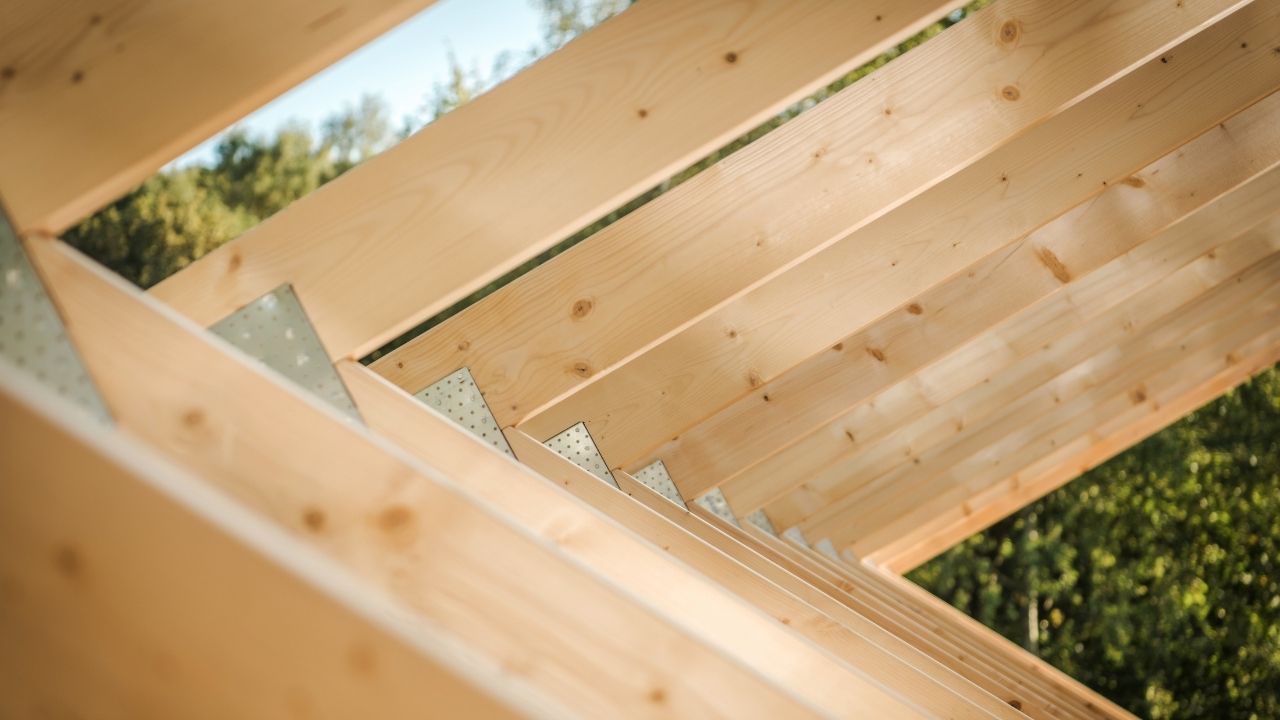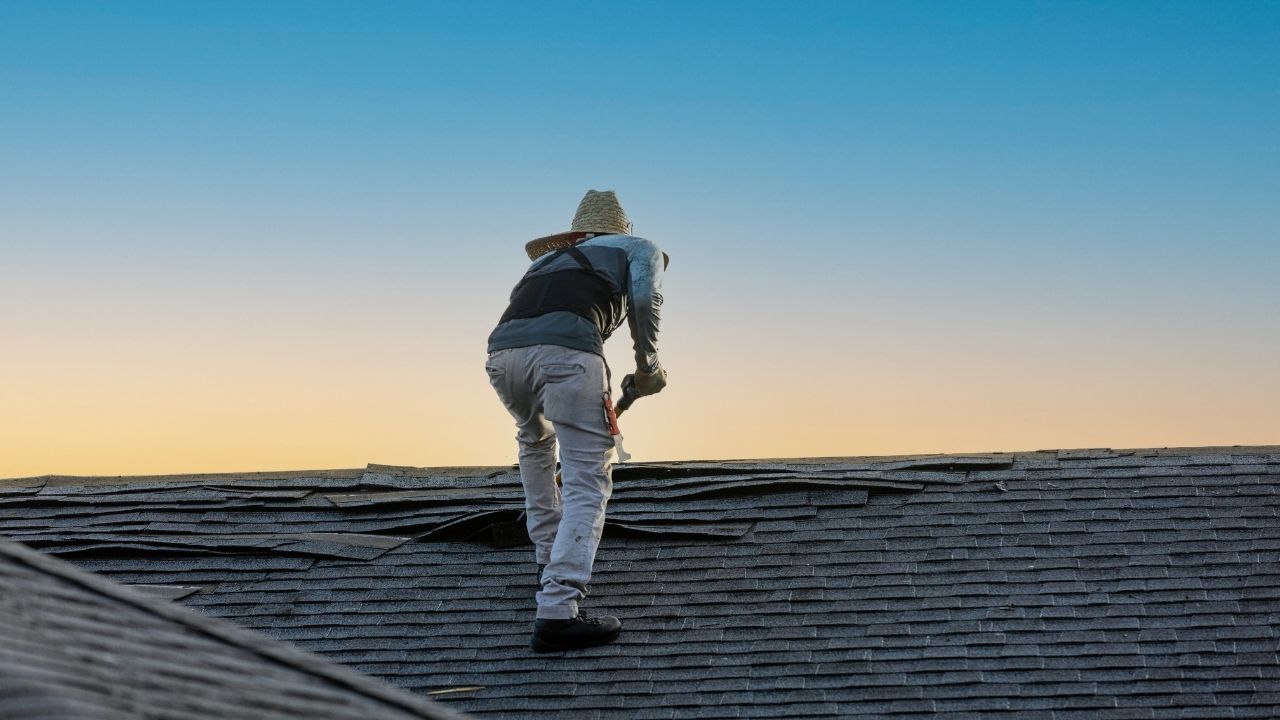
Fiberglass Mineral Surfaced RollRoofing is an asphalt-coated, glass-fiber reinforced product that has a ceramic-granular exterior. It resists UV rays and weathering. It is a general-purpose roofing material and is often used on low-slope roofs. It can also used as a foundation sheet in commercial applications. It comes in three colors: black, white or dark brown.
Single-ply rolled roofing generally requires a slope between two and four inches. Single-ply MRS roofs are also suitable for low slopes. Although the installation is similar to asphalt roofing shingles, the granules in this system are invisible and not suitable for steep roofs. For single-ply mineral surfaced roll roofing, there is no need to apply the underlayment. This material functions well as an underlayment for tiles and long-life roofing systems.

While it's easy and affordable to install, mineral-sprayed roll roofing usually doesn't last more 10 years. It is less susceptible to wind and hurricane damage due to the use of fewer nails. Roll roofing is more durable than asphalt-based roofs and can easily wear away, potentially compromising entire areas. Roll roofing is a continuous system that can easily wear and tear, so it is important to replace any damaged roof as soon as possible in order to prevent further damage.
Mineral Surfaced Roofing Roll Roofing is a cost effective solution for low slope roofs. The flat surface protects your roof from water and moisture. You can choose from a range of colors to match your home's style. If you order a lot, you may qualify for professional delivery and free in-store pickup.
Mineral Surfaced Rolle Roofing is perfect for low-sloped roofing. It is available as light-weight 75-pound units. It is easy to install and handle because of its texture. The material does NOT require a waterproof membrane. The installation is simple and homeowners don't need to be concerned about it. If you prefer to do the work yourself, a professional roofer is available.

Roll roofing offers low-sloped roofs a cost-effective, efficient alternative. It's easy to install, and it is a good choice for many residential and commercial uses. It is important to only hire licensed roofing companies in order to get proper installation. This material is popular for low-slope roofs. It is also offered by most shingle companies. It can be used on any type of roofing and is both durable and attractive.
Mineral-surfaced roll roofing products are low-slope roofs that use hot or cold adhesives. It is made with fiberglass mat which protects buildings from weathering and UV rays. This type roofing is both suitable for commercial and residential uses. Its durability is unparalleled and its versatility is unmatched by any other kind of roof. It is easy to install and requires no special tools or skills.
FAQ
What can I do to save money on my home's renovation?
It is possible to save money by doing the work yourself. You could, for example, try to reduce the number of people involved in the renovation. Another option is to try to lower the cost of the materials you use in your renovations.
How many times do I need to change my furnace filter?
It all depends on how frequently your family uses your home heating system. You may need to change your filter more frequently if the temperature drops and you plan on being away from home during colder months. But if you do not often go outside, it may be possible to wait longer between changing your filter.
A furnace filter can last about three months. This means that your furnace filters should be changed every three to four months.
For information on when to replace your filter, you can consult the manufacturer. While some manufacturers recommend replacing your filter once per heating season, others recommend waiting until there is visible dirt buildup.
What should I fix first when renovating a house?
Clean out your home and get rid of all clutter. You will need to clean out all moldy areas and repair any leaky pipes. Finally, you'll need to repaint the interior. Finally, you will need to wash the exterior surfaces clean and paint.
Can I remodel my whole house by myself?
Why pay someone to do it for you when you can do it yourself?
It doesn't really matter how much you love DIY. There will always be times when you just can't do it. It may be impossible to control the many variables.
For example, if you live in an old home, you might find that the wiring is outdated and you would need to hire a qualified electrician to make sure that your electrical system is safe and reliable.
Also, you should consider that some structural damage may not be possible during renovations.
Additionally, you may not have the right tools to complete the job. A plumber's snake is an instrument that can be used to unclog pipes.
Plumbing codes also require that you have a licensed plumber work on your project.
You need to be able to do the job before you take on any large tasks.
Ask for assistance from family and friends who have completed similar tasks before if you are uncertain.
They can advise you on the steps you should take and where to look for further information.
Statistics
- Most lenders will lend you up to 75% or 80% of the appraised value of your home, but some will go higher. (kiplinger.com)
- The average fixed rate for a home-equity loan was recently 5.27%, and the average variable rate for a HELOC was 5.49%, according to Bankrate.com. (kiplinger.com)
- They'll usually lend up to 90% of your home's "as-completed" value, but no more than $424,100 in most locales or $636,150 in high-cost areas. (kiplinger.com)
- On jumbo loans of more than $636,150, you'll be able to borrow up to 80% of the home's completed value. (kiplinger.com)
- Design-builders may ask for a down payment of up to 25% or 33% of the job cost, says the NARI. (kiplinger.com)
External Links
How To
How do I plan for a whole house renovation?
Planning a whole-house remodel requires planning and research. Before you begin your project, there are many things to think about. The first thing to do is decide what kind of home renovation you want. There are many options available, including kitchen, bathroom and bedroom. Once you've decided on which category to work on you will need to calculate how much money is available for your project. If you have never worked on homes, it is best to budget at most $5,000 per room. If you have experience, you may be able to manage with less.
Once you have established how much you are able to afford, you will have to decide on how big a job to do. If your budget only allows for a small renovation of your kitchen, you will be unable to paint the walls, replace the flooring or install countertops. On the other hand, if you have enough money for a full kitchen renovation, you can probably handle just about anything.
Next, find a contractor that specializes in the project you are interested in. You'll get high-quality results and save yourself lots of headaches down the line. You should begin gathering materials and supplies after you've found a competent contractor. You may need to purchase everything from scratch depending on the size and scope of your project. However, you won't have to worry about finding the exact item you are looking for in the many pre-made shops.
Once you have all of the necessary supplies, you can start making plans. To begin, draw a sketch of where you would like to place furniture or appliances. Then you will design the layout. Be sure to leave enough room for electric outlets and plumbing. Visitors will be able to easily reach the areas that are most frequently used near the front doors. Finally, you'll finish your design by deciding on colors and finishes. In order to avoid spending too much money, stick to neutral tones and simple designs.
Now it's time to build! Before you start any construction, be sure to check the local codes. Some cities require permits while others allow homeowners to build without one. When you're ready to begin construction, you'll first want to remove all existing floors and walls. Next, you'll need to lay plywood sheets in order to protect your new floors. You will then attach or nail pieces of wood together to make the cabinet frame. Finally, attach doors to the frame.
There will be some finishing touches after you are done. You might want to cover exposed pipes or wires. Plastic sheeting and tape are used to cover exposed wires. You will also need to hang photos and mirrors. Make sure to keep your work area neat and tidy.
You'll have a functional home that looks amazing and is cost-effective if you follow these steps. Now that you have a basic understanding of how to plan a house remodel, it's time to get started.